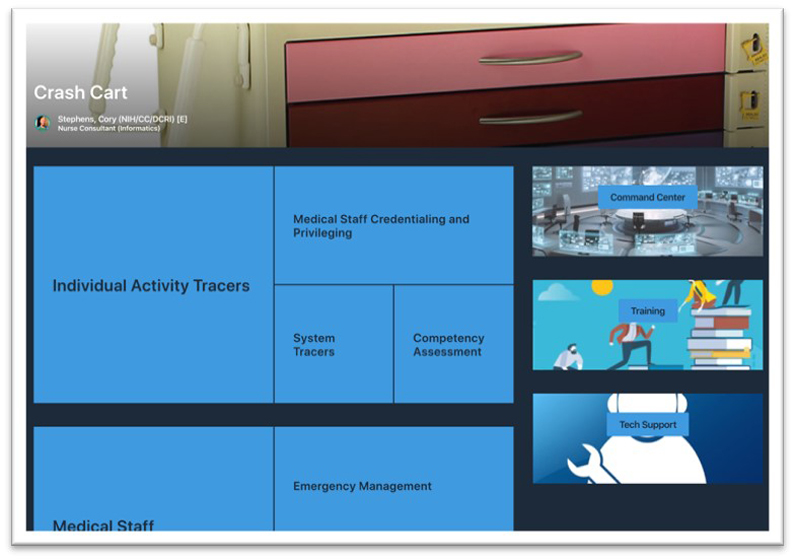Clinical Center Prepares for Joint Commission Survey


Tests can cause high anxiety for students. But how about when a whole organization is being examined? The NIH Clinical Center will be facing a test of its own in the next few months.
Every three years, the Joint Commission visits the Clinical Center as a part of its voluntary accreditation. The Joint Commission accredits and certifies more than 22,000 programs and establishments in the United States, including hospitals and other health care organizations.
As a federal institution, the Clinical Center does not need to be accredited, but it does so as a part of its commitment to provide the best care for its patients. This is a chance for the hospital to demonstrate its safe, high-quality care to an unbiased outside body and receive feedback on potential improvements.
The Joint Commission survey is usually in-person over a number of days or weeks, but due to the pandemic, this assessment will be a hybrid of in-person and virtual. That means hospital staff need to be ready to communicate while socially distanced.
Microsoft Teams is the preferred method for virtual communication during the survey. To help with this adjustment, the Clinical Center's Department of Clinical Research Informatics (DCRI) has been working with all departments in the hospital to get ready for the review. By providing Microsoft Teams training, giving one-on-one support and sharing best practices for virtual meetings, DCRI has helped to inspire confidence and readiness for the visit.
One example of the preparations underway is the transformation of Office of Patient Safety and Clinical Quality's (OPSCQ) "Joint Commission Crash Cart." A crash cart is a clinical term to describe a locked container with drawers that hold life-saving supplies and equipment to be used during a medical emergency. OPSCQ borrowed that term to describe their physical location for storing important documents that are needed for a Joint Commission visit. With things moving to a virtual environment, the workflow and design of the physical crash cart evolved into a digital version in Microsoft Teams and SharePoint online.
As a part of the preparations, Helen Mayberry, MSN, RN, CPPS from the Clinical Center Nursing Department has been leading preparation events to allow staff to practice effective communication and information sharing in the virtual platform. In these warmup sessions, Mayberry assumes the role of a Joint Commission surveyor directing anticipated questions to staff so they can prepare for the real thing. Mary Sparks and Aziza Mwidau, MSHS, BSN, CPHQ, in OPSCQ are also assisting in this role to reach a wider audience in the hospital.
While assessments are often stressful, the Clinical Center staff are doing their best to ensure the hospital passes with flying colors.
- Cory Stephens, MSN, RN-BC, CPHIMS, SHIMSS